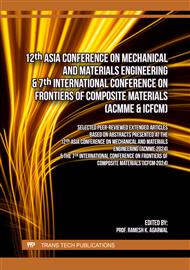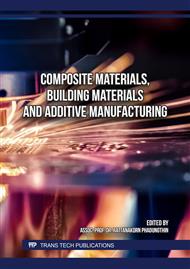p.9
p.15
p.21
p.29
p.41
p.49
p.61
p.67
p.75
Recovery and Size-Tuning of Amorphous Silica from Geothermal Scales in Batangas, Philippines
Abstract:
Scale deposits in geothermal power plants are well-known potential sources of minerals. Extensive research in mineral recovery is crucial due to the considerable variability in scale composition and geochemistry based on location. Geothermal scales from Batangas, Philippines, were used to synthesize size-modified amorphous silica (SiO2) via sol-gel method. Initial analyses employing x-ray fluorescence spectroscopy (XRF), total dissolved solids (TDS), electrical conductivity (EC), and pH measurements confirmed that the scale is rich in silica and salts at neutral pH. Then, the effect of varying scale concentration, precipitation pH, and aging time on the particle size distribution of recovered amorphous silica were investigated. Dynamic light scattering (DLS) for particle size analysis (PSA) revealed that the sample with 2.5% (w/v) scale precursor in NaOH and precipitated until pH 10 had the lowest average cumulant diameter (1.66 μm). Moreover, the synergy of precipitation pH and aging time was found to significantly affect the polydispersity index and cumulative diameter of precipitated SiO2 based on 23 factorial ANOVA at 0.05 significance level. X-ray diffractometry (XRD), Fourier transform infrared (FTIR) spectroscopy and scanning electron microscopy (SEM) confirmed that the precipitates were amorphous SiO2 with spherical morphology. This study proves the viability of utilizing geothermal scales from Batangas, Philippines for the synthesis of amorphous SiO2 with controlled particle size, which is a potential filler for composite materials.
Info:
Periodical:
Pages:
41-45
Citation:
Online since:
November 2024
Keywords:
Price:
Сopyright:
© 2024 Trans Tech Publications Ltd. All Rights Reserved
Share:
Citation:



